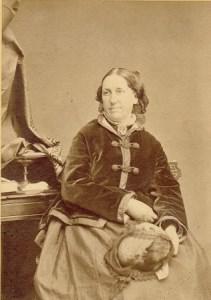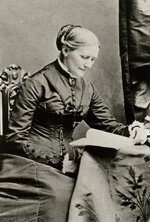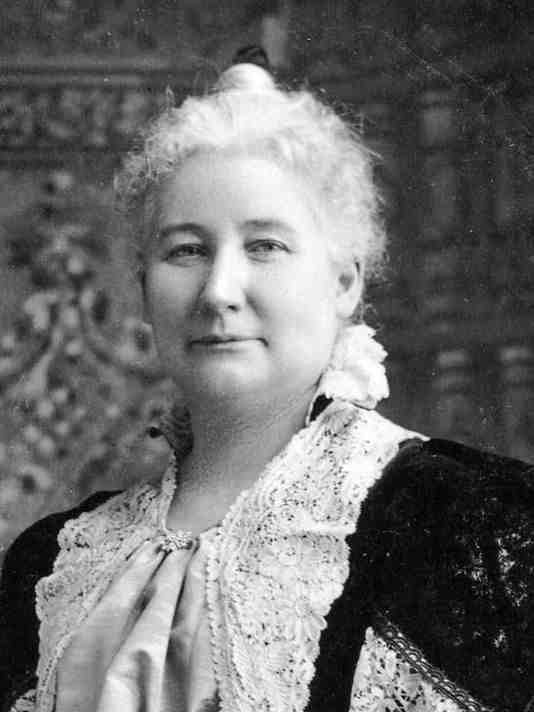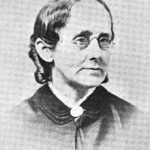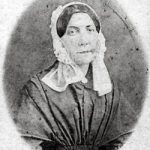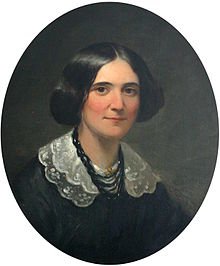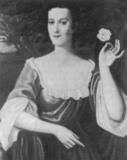Naturalist and Pioneer in Women’s Education
Elizabeth Cary Agassiz was a naturalist and educator who was co-founder and first president of Radcliffe, a women’s college in Cambridge, Massachusetts. By her tact and fund-raising abilities, she nurtured the college and insured its continued success.
Early Years
Elizabeth Cabot Cary was born December 5, 1822 to successful Boston businessman Thomas Graves Cary and Mary Ann Cushing Perkins Cary. Due to her delicate health Elizabeth was educated by a governess at home who taught her languages, drawing, music and reading. She additionally received informal history lessons from Elizabeth Peabody.
After her older sister married a Harvard professor, Elizabeth joined a group of Cambridge intellectuals, where she met Louis Agassiz, a widower with three children from a previous marriage. Already a prominent scientist while still a young man, Agassiz had come to the United States in 1848 to teach at Harvard.
The Agassiz Partnership
Elizabeth Cary entered into a marital union with renowned Swiss naturalist Louis Agassiz on April 25, 1850. She organized the household, took care of the finances and raised her three stepchildren – Alexander, Ida and Pauline with whom she developed strong relationships. She had no biological children.
Their professional relationship included education, science and extensive travel. For a time, the family lived in Charleston, South Carolina, where Louis was professor at a medical school. Elizabeth worked closely with her husband in his scientific research. She worried that her lack of a formal education might not be sufficient, but her work proved to be invaluable to his career.
In 1855 Elizabeth Agassiz established a school for girls in their home in Cambridge, Massachusetts, which provided a small income and addressed the need for the education of young women. Her husband supported her by teaching, as well as arranging for courses from other Harvard professors. After several years of operation, the school was closed due to financial difficulties.
Thayer Expedition
In 1863, Elizabeth Agassiz helped organize and manage the Thayer Expedition to Brazil (1865–1866), and accompanied her husband as the main writer and record keeper on that trip. A Journey in Brazil (1868) was the result of that trip, taken from her journals and her husband’s scientific observations, including descriptions of their introduction to Brazilian society. The book was very popular.
Excerpt from A Journey in Brazil:
I wish it were possible to give in words the faintest idea of the architectural beauty of this colonnade of palms, with their green crowns meeting to form the roof. Straight, firm, and smooth as stone columns, a dim vision of colonnades in some ancient Egyptian temple rises to the imagination as one looks down the long vista.
In 1867 Elizabeth Cary Agassiz began corresponding with Arnold Guyot, a well known geologist and meteorologist who had emigrated to the United States. On October 15, 1869, she became one of the first women members of the American Philosophical Society. Other early women members included Mary Fairfax Somerville and Maria Mitchell.
Hassler Expedition
Elizabeth also helped organize and manage the Hassler Expedition (1871-1872), the first important marine exploration by the U.S. government; once again, she took extensive notes. Louis Agassiz and several other scientists were on board the ship. They left Boson in December, traveled to St. Thomas, along the coast of Brazil and through the Straits of Magellan. Much of their collected specimens were given to the Museum of Comparative Zoology at Harvard.
In 1873 the Agassizes founded a coeducational school, the Anderson School of Natural History, a marine laboratory located in Buzzard’s Bay, Massachusetts. Louis Agassiz died on December 14, 1873. In 1885 Elizabeth wrote his biography, Louis Agassiz, his Life and Correspondence.
Agassiz also enjoyed domestic life. Her stepson’s wife died only eight days after Louis’ death. So in addition to raising her three stepchildren, Agassiz also raised three grandchildren. Her stepson Alexander described her as “my mother, my sister, my companion and friend, all in one.”
Pioneer in Education for Women
Elizabeth Cary Agassiz firmly believed that women should be taught the same subjects and by the same instructors as men. In 1879, after prolonged efforts by women to gain access to Harvard College, she and several other visionaries founded the Harvard Annex, which was formally incorporated as the Society for the Collegiate Instruction of Women.
Agassiz was one of seven female Managing Directors of the Society. This program provided qualified women who intended to pursue an advanced education in Cambridge with the opportunity to receive private lessons from professors and other instructors at Harvard. They began in 1879 with 27 women students.
She served as the Society’s president until 1894, and her work was essential in ensuring that the Harvard Annex was chartered as Radcliffe College by the Commonwealth of Massachusetts in 1894. She continued as president of Radcliffe until 1899. From 1900 to 1903 she was honorary president. With her tact and her fundraising skills she promoted the College and contributed significantly to its continuity.
Agassiz also continued to enjoy traveling, and in 1892 she and her family explored the Pacific Coast, including California, for three months. She became a member of the Ladies’ Visiting Committee for the Kindergarten for the Blind, under the Perkins Institution for the Blind. She acted as treasurer for the Cambridge branch of the committee until 1904 when she became ill.
Elizabeth Cary Agassiz died June 27, 1907 in Arlington, Massachusetts from a second cerebral hemorrhage. She is buried in Mount Auburn Cemetery with her husband. The monument there is a boulder selected from the moraine of the Aar Glaciers, near where Louis Agassiz once lived.
Her publications include A First Lesson in Natural History (1859); Seaside Studies in Natural History (1865), in which she was assisted by her stepson; and Life of Louis Agassiz: His Life and Correspondence (1885). Elizabeth’s her sister Emma F. Cary and Lucy Allen Paton wrote Elizabeth Cary Agassiz : a biography, which was published in the spring of 1917 with the assistance of the Council of Radcliffe College.
SOURCES
Femilogue: Elizabeth Cary Agassiz
Wikipedia: Elizabeth Cabot Agassiz
Women-Philisophers.com: Elizabeth Cabot Cary Agassiz
